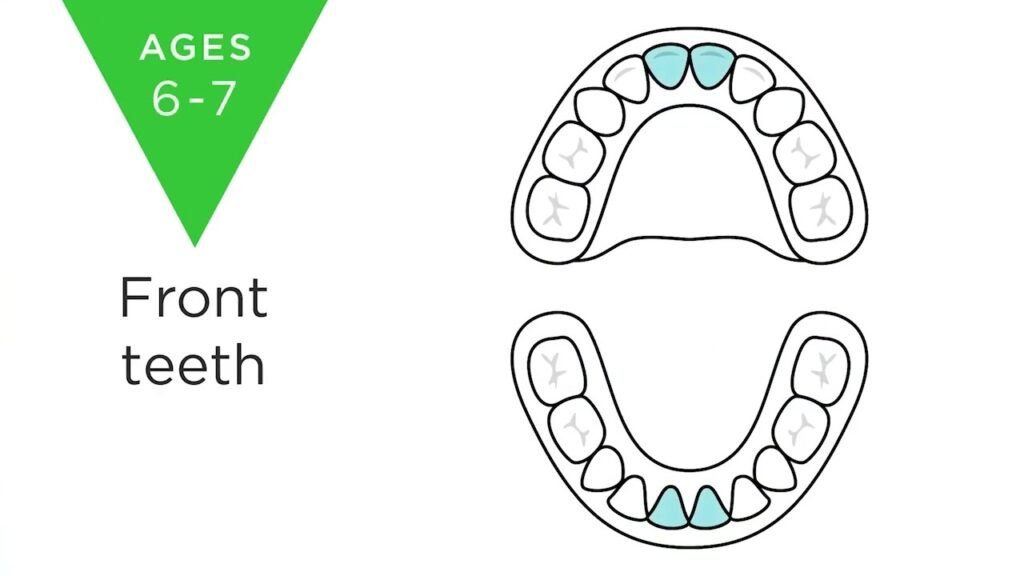When do Toddlers Lose Their Baby Teeth?

When it comes to toddler milestones, one of the most exciting and bittersweet moments for parents is when their little ones start losing their baby teeth. Typically, toddlers will begin to lose their teeth around the age of 6, but it can vary from child to child. This natural process can be both thrilling and nerve-wracking for parents, but understanding the signs and symptoms of teething and tooth loss can help make the transition smoother for both toddlers and their caregivers. In this article, we'll explore the timeline of when toddlers start losing their teeth, what to expect during this stage, and how to best support your child through this important developmental milestone.
Can a 4 year old lose teeth?
Yes, it is possible for a 4-year-old to lose teeth. According to McTigue, a professor of pediatric dentistry, the average age for losing the first tooth is around 5 1/2 or 6, but it is not uncommon for some children to start losing teeth as early as 4. In fact, some kids may not lose their first tooth until they are as old as 7.
It is important for parents to monitor their child's dental development and be aware that losing teeth at a younger age is within the realm of normal. If a 4-year-old starts losing teeth, it is nothing to be alarmed about, as each child's dental timeline can vary. However, it is always a good idea to consult with a pediatric dentist to ensure proper oral care and development.
Is losing baby teeth at the age of 5 considered normal?
It is normal for children to lose their first baby tooth around the age of 5 or 6, although each child is different and some may lose their first tooth earlier or later. The process of losing baby teeth typically begins around this age as the permanent teeth start to push through, signaling an important developmental milestone in a child's growth.
Which are the first teeth that toddlers lose?
As toddlers grow, they will start to lose their baby teeth, also known as primary teeth, around the age of 6. It is common for girls to lose their first tooth before boys, and the most frequently lost teeth for children are the bottom front two teeth, known as the lower central incisors.
The Timeline of Toddler Tooth Loss
As children grow and develop, they reach a significant milestone when their baby teeth begin to fall out, making way for permanent adult teeth. The timeline of toddler tooth loss typically begins around the age of 6 or 7, when the first lower incisors start to loosen and eventually fall out. This process continues over the next few years, with the remaining baby teeth gradually being replaced by permanent teeth. It's important for parents to encourage good oral hygiene habits and to monitor the progress of their child's tooth loss to ensure a smooth transition to a healthy adult smile.
Understanding Your Toddler's Tooth Development
As a parent, understanding your toddler's tooth development is crucial for their overall oral health. By the age of three, most toddlers will have their full set of 20 primary teeth, also known as baby teeth. It's important to monitor their tooth development and encourage good oral hygiene habits from an early age to set the stage for a lifetime of healthy teeth. By understanding the timeline and process of your toddler's tooth development, you can better support their dental care and ensure they have a bright, healthy smile for years to come.
Say Goodbye to Baby Teeth: A Parent's Guide
Prepare yourself for the inevitable milestone of your child losing their baby teeth with confidence and ease by following this comprehensive parent's guide. From understanding the natural process of teeth shedding to tips on how to ease any discomfort your child may experience, this guide covers it all. Say goodbye to baby teeth with grace and knowledge, knowing that you are equipped with the tools to support your child through this important developmental stage.
In the exciting journey of childhood development, the milestone of losing baby teeth typically begins around the age of six or seven. This natural process marks a significant transition towards the growth of permanent teeth, symbolizing the maturation of a child's oral health. As parents and caregivers navigate this phase with patience and understanding, they can support their little ones in embracing this normal and inevitable change. Celebrate each lost tooth as a sign of growth and development, and cherish the precious memories that come with each tooth fairy visit.